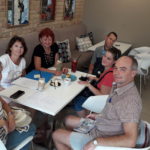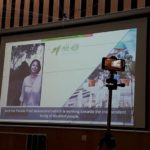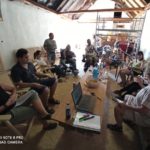We are always very glad to be able to involve young people in our work and show them what the life is like as a disabled person.
We work regularly with high school students, many of them apply to complete their 50-hour community service with us. It’s very good with them, they almost don’t need to be sensitized, for them the acceptance of differentness is absolutely natural. ♿️
Such an open area is the world of university students, to which our long-standing goal was to get closer. Thanks to the University of Pécs’s Vocational College of Social Inclusion and our member of the association Molnár Gyöngyi we have already participated in several courses, made a video debut with the students (professionally), they volunteered with us. Now at the conference on Communities and Organisations we were talking to many of them in the Community Learning and Disability section.
It was a very good experience, thank you! stay with us guys! ?



